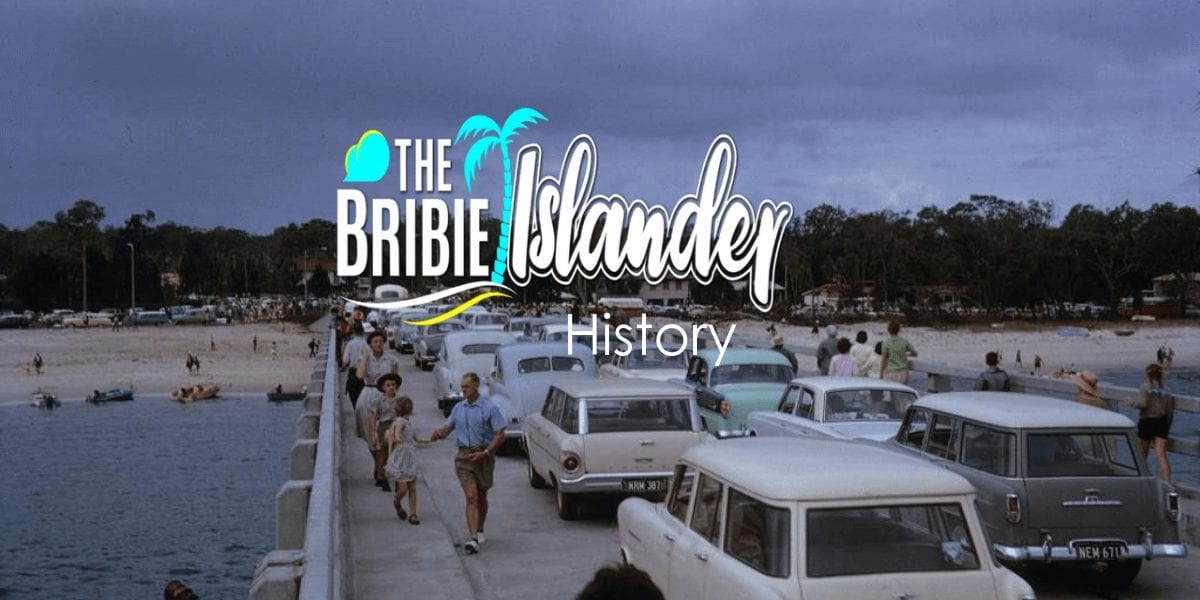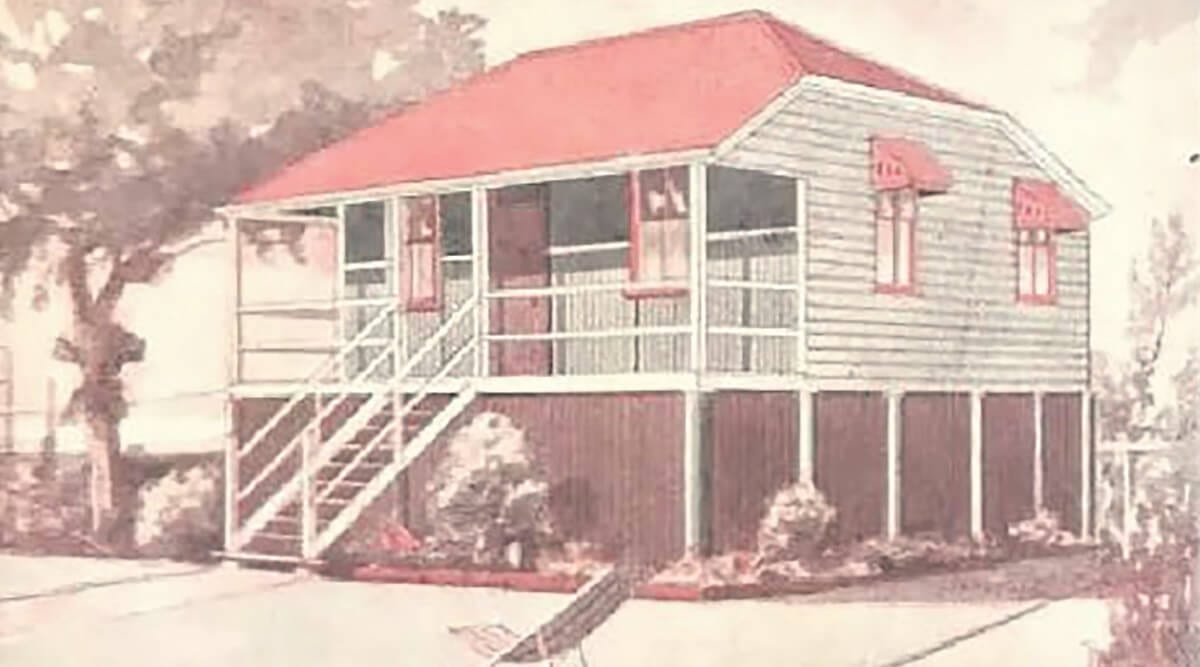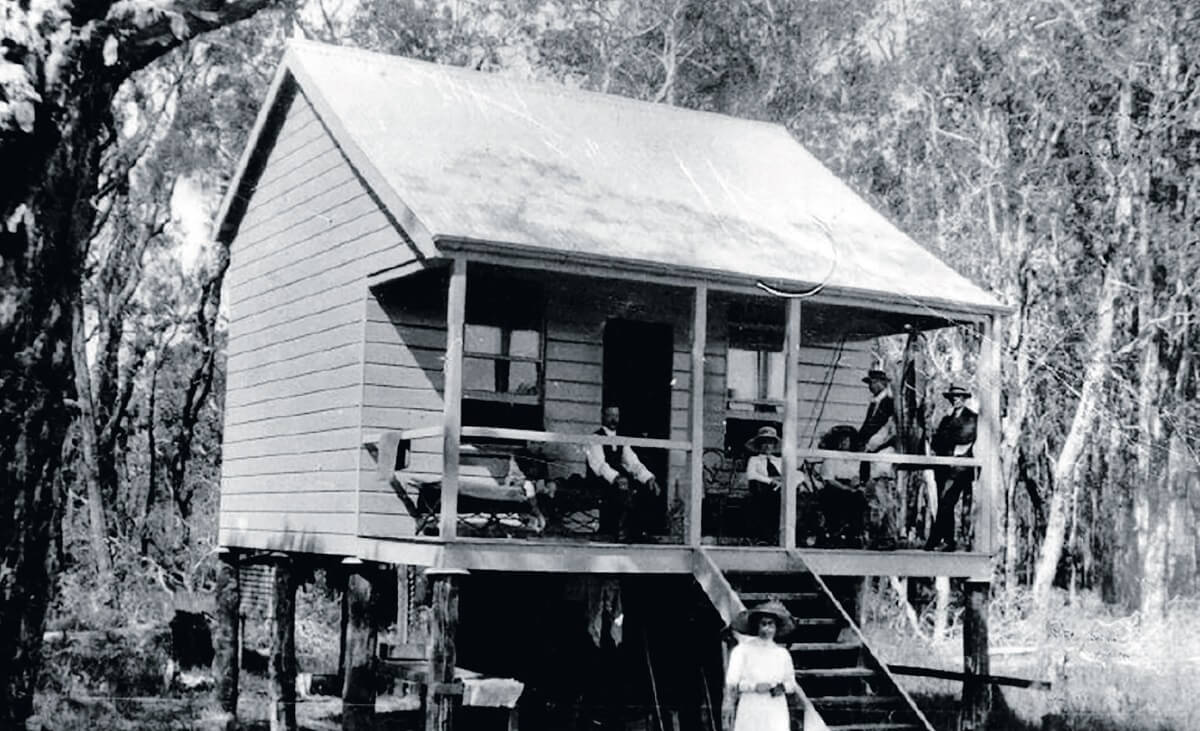Tags: Timber Industry History. Bribie Island. Moreton Bay. Queensland. Australia
A few Aborigines were still on Bribie Island in 1881, before white settlers were residents, when a large Timber Mill operated on Coochin Creek, up Pumicestone Passage opposite Bribie Island.
Pioneers were embarking on new commercial ventures at that time with Oyster dredging in Pumicestone Passage, and Sugar plantations on Caboolture River and “Morayfield”. Brisbane was growing rapidly and lots of wood was required for construction, so securing, and cutting large hardwood trees provided major opportunities.
This was very challenging, tough, lonely and demanding work for those pioneers who ventured into the Blackall Range in search of big Cedar trees.

TIMBER GETTERS
Massive trees were difficult to access and cut down. They required large bullock teams to drag them to dangerous “Chutes” down the mountain, and then rafts of logs floated down creeks and towed to Brisbane. Records show in 1877 the first white man ventured up to a place known as “McCarthy’s Chute”, near the present Mary Cairncross Park at the southern end of the Blackall range.
Some timber getters took wives and family with them to these remote locations where they were often left alone in bush camps for weeks at a time. These early pioneers and white settlers observed large groups of aborigines gathering every third year, in February and March to enjoy their Bunya Nut feast and festival.
JAMES CAMPBELL
One of the early timber pioneers was James Campbell who arrived in Brisbane from Scotland in 1853 at the age of 23 and set up a building supply business, which became one of the largest in the Commonwealth. Campbell initially bought timber from the “Getters” in the Blackall Ranges and in 1881 set up his own large Sawmill on Coochin Creek off Pumicestone Passage.
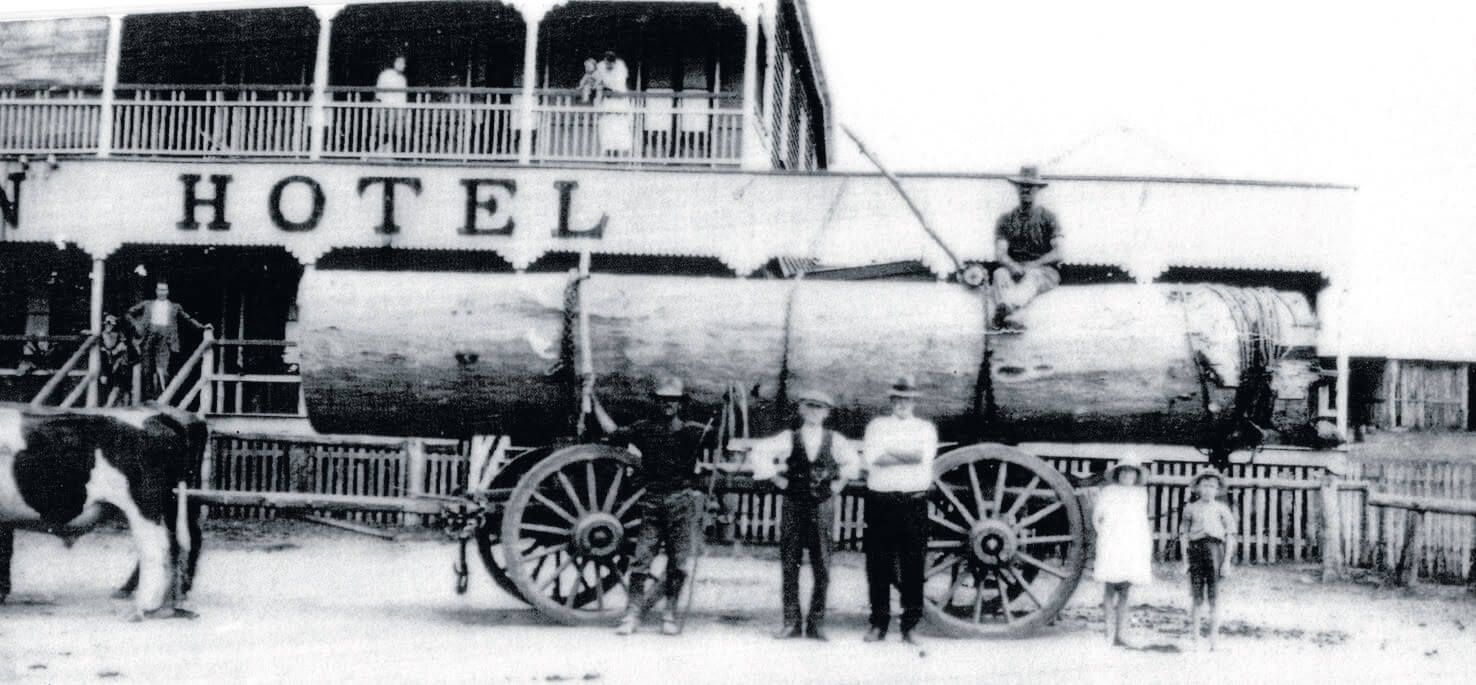
This was at its junction with Mellum Creek, a navigable waterway in those days, above the tidal point, where fresh water was available for the Mill boilers. The Mill settlement of “Campbellville” was a thriving business for the next 10 years. As well as the hinterland, hardwood logs were obtained from creeks along Pumicestone Passage and on Bribie Island. There are still some huge old tree stumps on Bribie if you know where to look.
LONDON EXHIBITION TIMBER
One huge Red Cedar log required a team of 60 Bullocks to haul it up “Walkers Pinch” near Maleny. Another log over 4 metres long and 5 metres girth, containing over 4000 super feet of timber, was towed to Brisbane and shipped to London to be exhibited at the “Indian & Colonial Exhibition” in 1886.
After the Exhibition, the log was offered for sale but there were no buyers as it was beyond the capacity of any equipment in England. Eventually, explosives had to be used to reduce it to manageable pieces.
This was a costly lesson for James Campbell & Sons. James Campbell & Sons went on to control eleven Sawmills, owned and operated 28 shipping vessels, the Landsboro Hotel and Buderim Mountain Sugar Mill, and supplied pre-fabricated kit homes. Campbellville became a bustling Mill, trading centre and township of over 100 people.
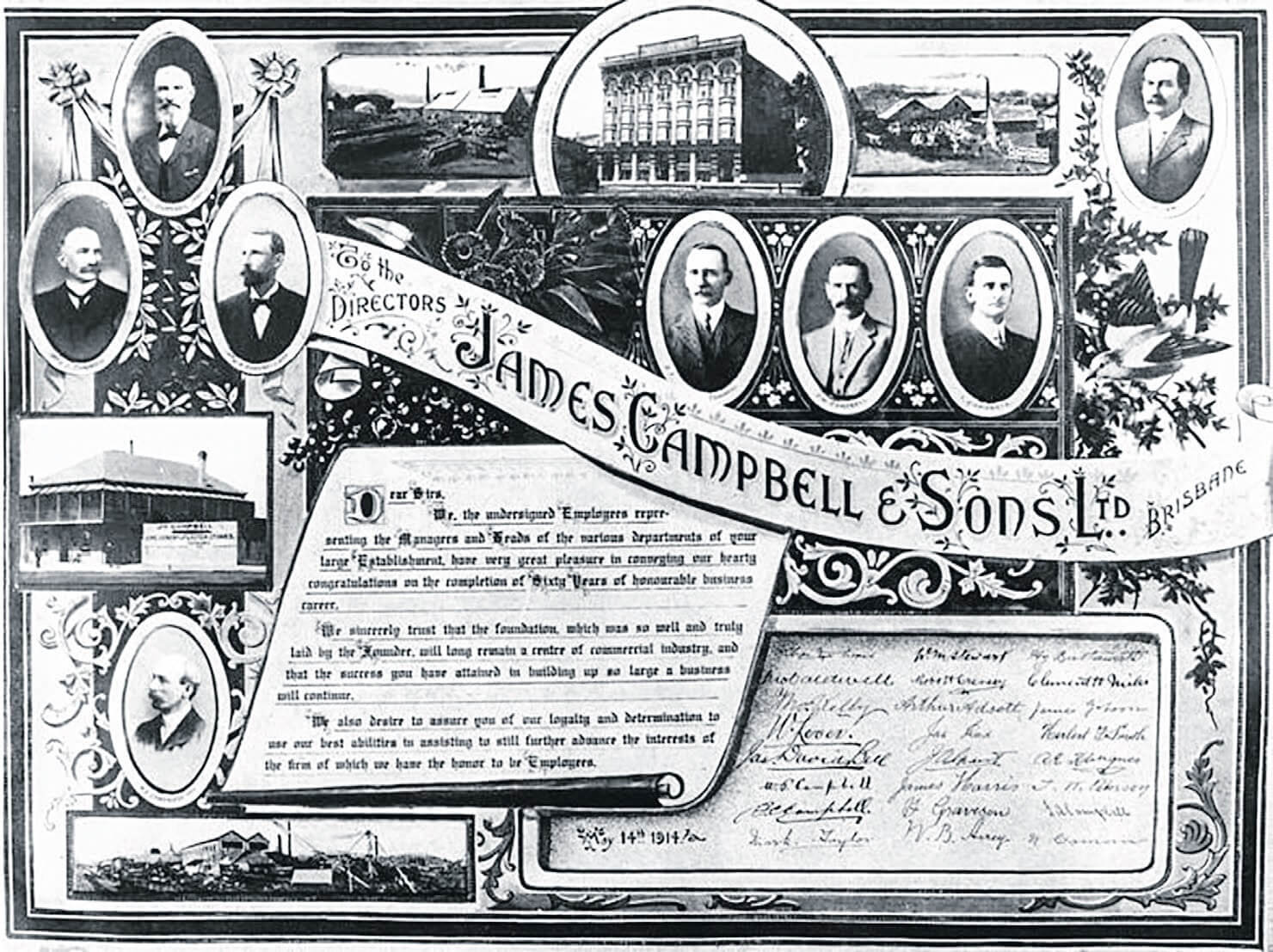
THE CAMPBELL FAMILY
The Campbell family was well represented at Campbellville. As well as the founder James Campbell, there were his three sons John Dunmore, George Peter and Charles William holding various positions of authority at the mill.
The second manager was George Campbell who was just 17 when he first held that office. John Campbell, the first son of the founder, was elected to the Caboolture Divisional Board in 1883 and was instrumental in having the North Coast Railway line built-in 1886. He later became Minister for Railways and represented the Electorate of Moreton.
The building of that Railway line led to the demise of Campbellville as a Mill and water transport hub in 1890, and the equipment was relocated to Albion. Money was scarce for the early settlers and a delayed bartering system developed whereby the settlers forwarded timber down to the Mill, after which they received their food supplies and other necessities, often months later.
CAMPBELLVILLE TOWNSHIP
Various sailing cutters carted timber down Pumicestone Passage to Brisbane before the paddle wheeler “Mavis” was built in 1883 to transport timber from Campbellville. A double-ended paddlewheel steamer named “Bribie” was built at Coochin Creek, to run between Brisbane and Caloundra, and tow pontoons of logs and sawn timber to the steamer “Mavis”.
At the height of its industry, an article published in “The Queenslander” in 1885, describes it as follows… “The large Millhouse, the many houses, sheds the noise from the engines, the wharf, and huge cranes caused a scene of bustle and industry. Messrs Campbell has done much for this district in developing its timber resources.
One hundred men are on the pay list besides contracts for various purposes, indeed the population of the little Mill Township including wives and youngsters is about 100 souls. A School has been erected by the proprietors, the average attendance at which is 20.” Apart from this brief description, little is known of the location of buildings and houses, which once formed the township of Campbellville.
The School was in fact a Provisional School, not being large enough to be classified as a State School. We do know there was a Post Office, which opened in January 1883 for which the postal official received 6 Pounds a year ($12) until it closed in 1891.
BUILDING THE RAILWAY
The construction of the north coast Railway enabled wider and more efficient transport of Timber. In 1893 the great floods which devastated Brisbane and surroundings, also destroyed what remained of Campbellville, causing creeks to flood and the Pumicestone Passage to silt up to the difficult shallow waterway it is today.
A few people did stay on at Campbellville for about three years after the equipment was moved to Albion, and the firm continued logging in the area until about 1910.
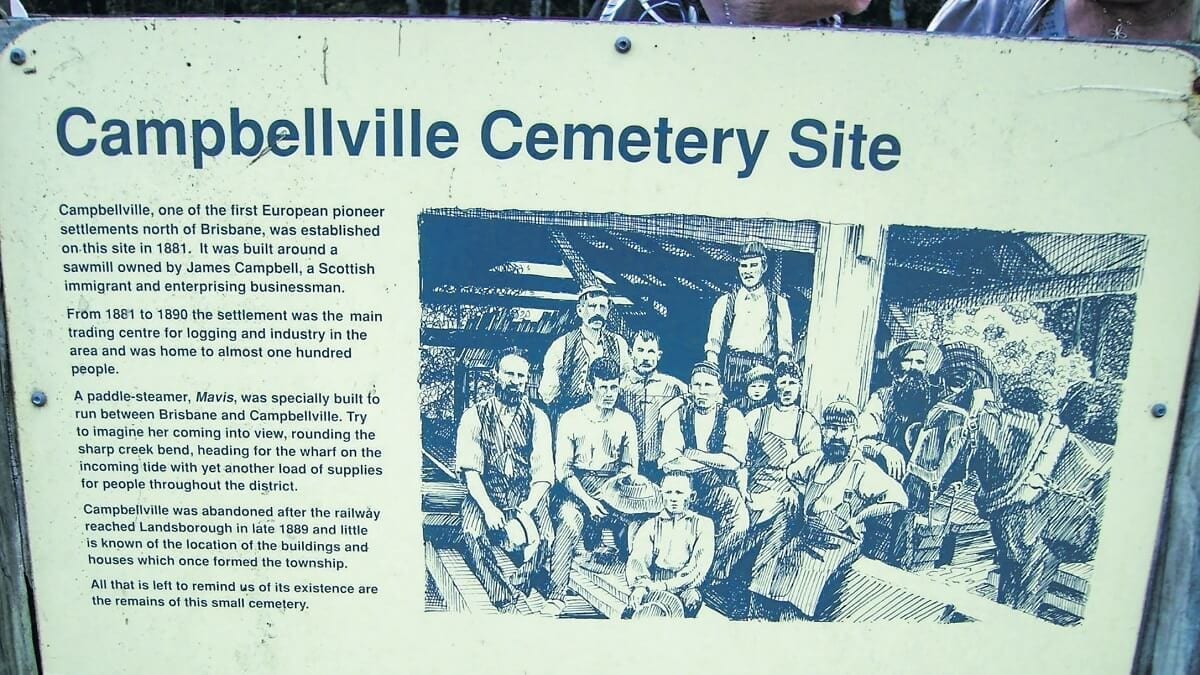
CAMPBELLVILLE CEMETERY
In April 1966 Forestry workers were clearing a road and firebreak in the area and found some old wooden posts that marked the site of the little cemetery of Campbellville, more than 80 years after the first burial had taken place. Research has revealed the names of 4 of the possible 9 pioneer residents who were buried there.
Mrs. Harry Blake – wife of the saw sharpener and Mill Engineer.W.Petersen – all we know is that he was a biggish man.
Frank Lovesey – who died suddenly while step dancing
Baby Assen – child of Frank Assen, yardman at the mill and owner of 80 acres of land adjoining Coochin creek.
It is believed that the headstones marking the graves were wooden and disintegrated long ago, and the only evidence of a burial site was the hardwood posts bordering the graves found in 1966.
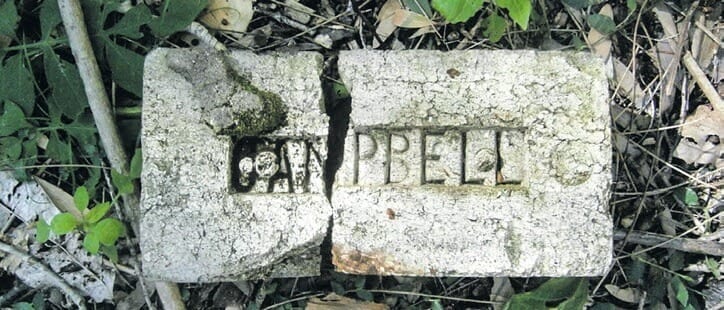
NOTHING LEFT TODAY
Today all that gives any indication of this once thriving operation at Campbellville is a small sign telling about CAMPBELLVILLE CEMETERY 1880-1893. I took some members of the Historical Society for a visit a few years ago.
It is not an easy place to find, but drive down “Roys Road” you will see the sign. Also scattered in the bush are a few bricks bearing the name “Campbellville” which would have been made in the Ipswich area.
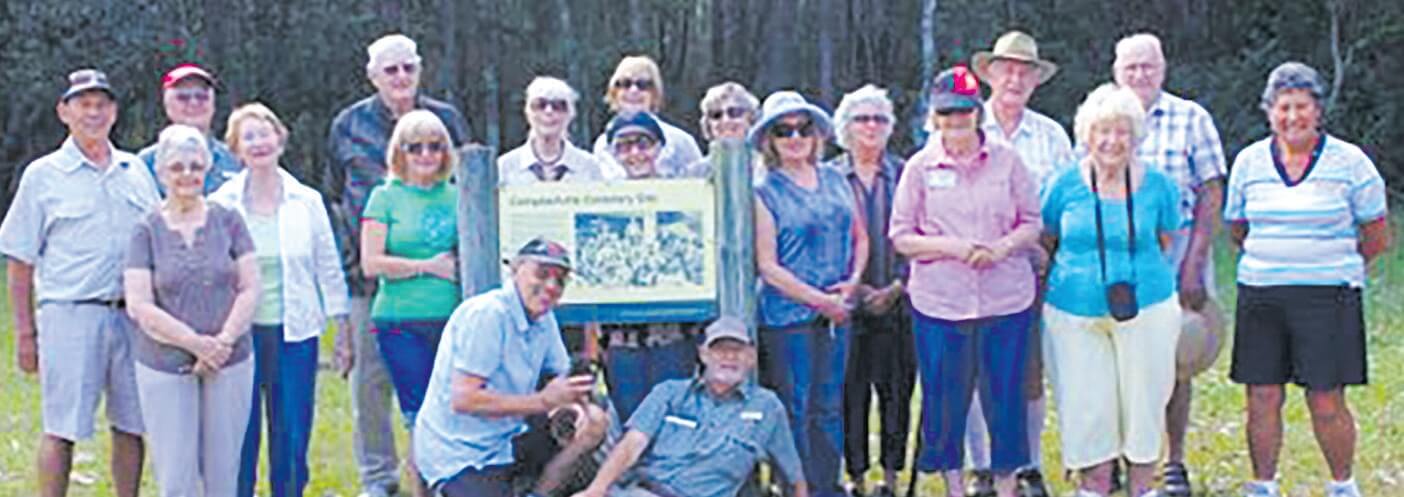
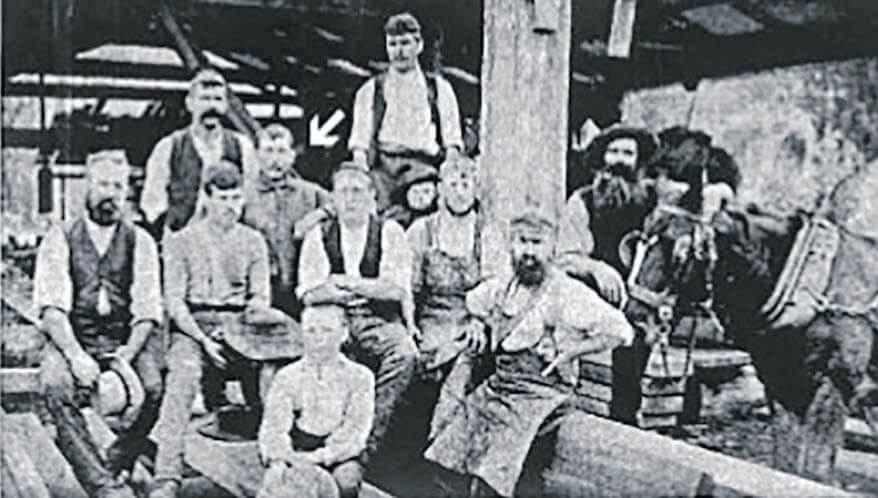
CAMPBELLVILLE CONNECTIONS
I made a brief mention of Campbellville in one of my recent articles in this newspaper. Several people with interesting connections to Cambellville contacted me. One was Mrs. Val Widt of Delaney’s Creek, who is the granddaughter of Frank Assen who worked and had land there in the mid 1880s.
One of his daughters was one of those identified as buried at the cemetery site. There is only one known photo taken at Campbellville showing a group of about ten Mill workers at an unknown date. Only one person in this photo has so far been identified and that is John Robins, a Mill Sawyer, who is marked with a white arrow in the photo.
BRIBIE CONNECTIONS.
John Robins worked at Campbellville with his brother William. William also worked with Frank Assen, (Val Widt’s grandfather) who had a farm nearby, where he met and married his daughter Florence Assen.
They married in Caboolture and went to work for James Campbell & Son at Albion. In 1912 William built a holiday cottage on Bribie Island when the island was first opened up to residents, which was later inherited by his son Charles (Chick).
When Charles eventually retired from work, it ended over 100 years of service by the Robins family with James Campbell & Sons.
139 YEARS OF HISTORY
The cottage at 49 Toorbul Street, Bongaree is still there today, and still in the family. Charles Robins left the cottage to his two daughters Joan and Rita. Joan still lives on Bribie Island with her husband Jeff Barber, and Sister Rita owns the holiday cottage.
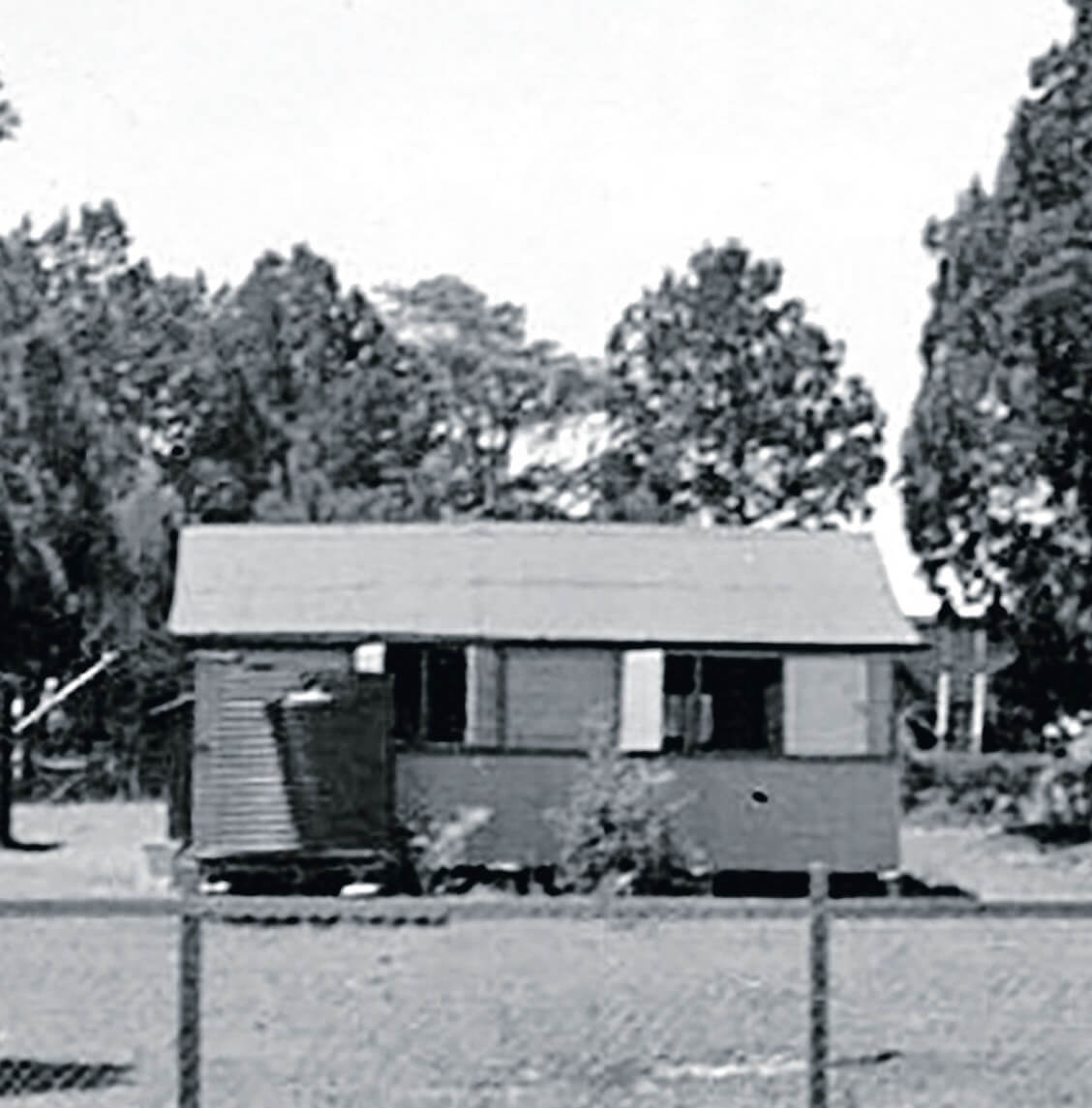
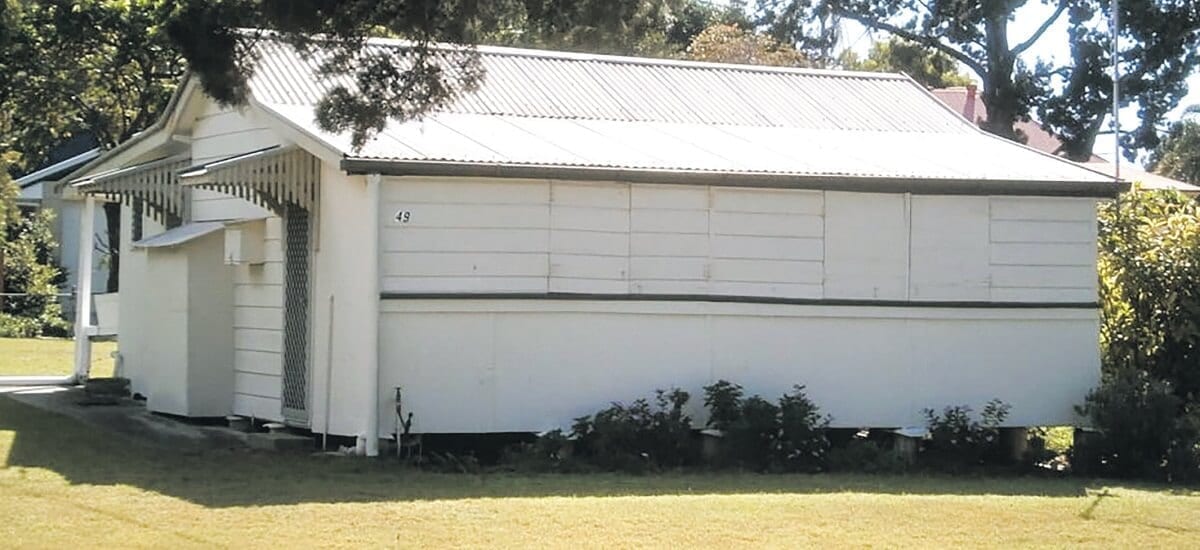
It is fascinating to uncover this 139-year family connection to the old Campbellville site, with three generations of the Robins family working for almost 100 years for James Campbell & Sons, and their cottage at 49 Toorbul Street still in the family after 107 years.
It is quite rewarding when I write something about a piece of history close to Bribie, and little known by anyone results in what I have been able to write for you in this article. Thanks to Val Widt and Joan (nee Robins) Barber for their photos and information provided for this article.
BRIBIE HOUSES
James Campbell & Sons business went on to manufacture various designs of prefabricated houses, one of which was named “The Bribie”, examples of which can still be seen on Bribie island today. The Campbell family also built their holiday homes on Bribie in 1913.
MORE BRIBIE HISTORY
The Historical Society have monthly public meetings at the RSL Club on the second Wednesday of each month commencing at 6:30 pm with interesting guest speakers on a wide range of topics. Come along. You can see many more photos and articles on our Blog Site at http://bribieislandhistory.blogspot.com or contact us on [email protected]
Other Articles
- Bribie Island History – BRIDGE OVER TROUBLED WATERS
- Bribie History – “BRIBIE COUNCILLORS” …long ago!!
